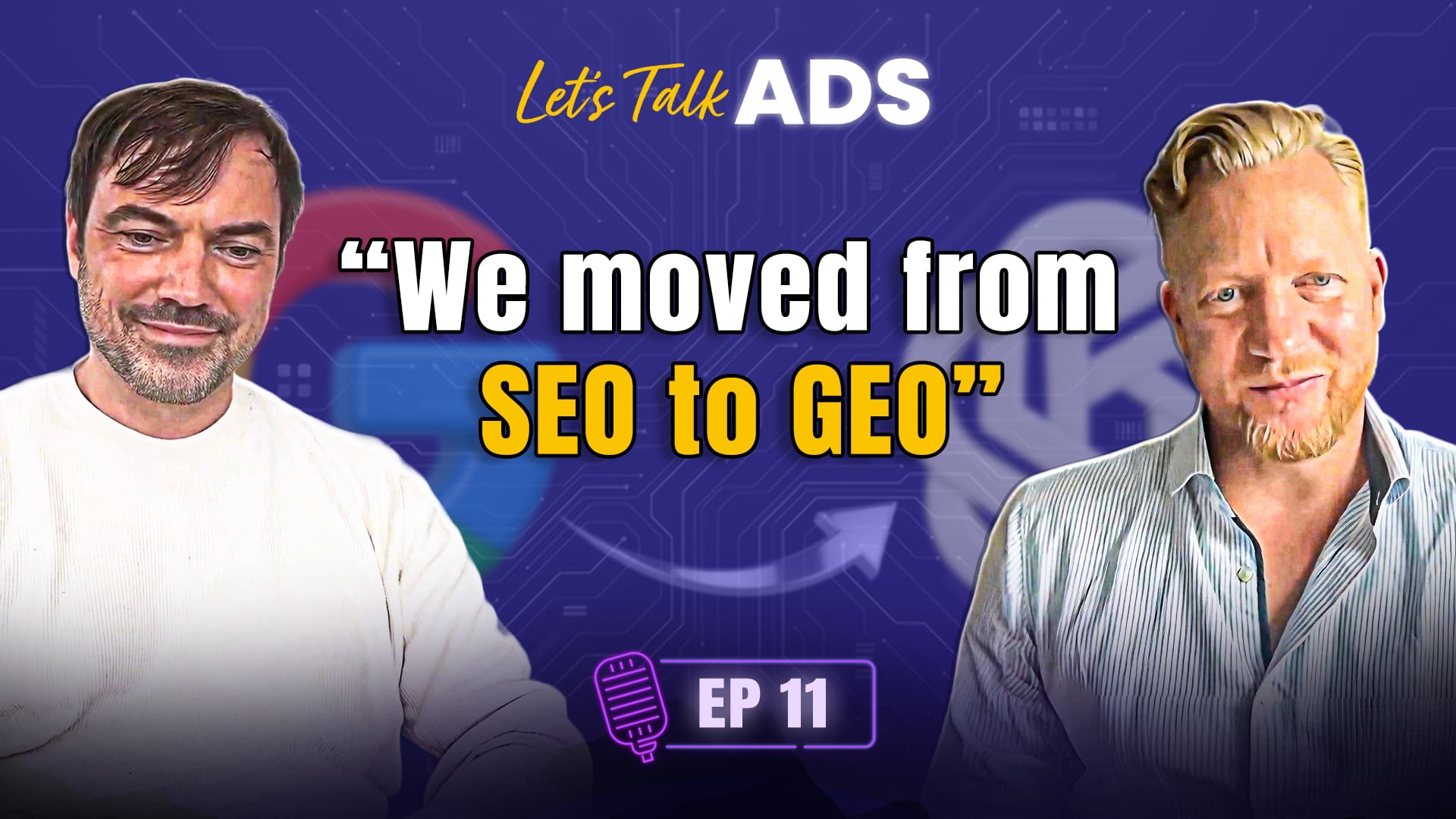App Store Optimization has evolved dramatically over the past few years, yet 90% of companies are still making fundamental mistakes that cost them millions in potential revenue. Whether you’re a startup founder launching your first app or a seasoned marketing manager looking to improve your ASO strategy, this comprehensive guide will reveal the harsh truths about what actually works in ASO today.
Table of Contents
What You’ll Learn:
- Why most ASO strategies fail and how to avoid common pitfalls
- The real resource requirements for effective ASO implementation
- How to structure ASO teams for maximum impact
- Advanced localization strategies that drive conversions
- Creative testing approaches that actually work
- Metrics that matter beyond basic app store rankings
What is App Store Optimization (ASO)?
App Store Optimization (ASO) is the process of improving your mobile app’s visibility and conversion rate in app stores like the Apple App Store and Google Play Store. Think of it as SEO for mobile apps, but with unique challenges and opportunities that require specialized expertise.
The Two Pillars of ASO
1. Discoverability (Getting Found)
- Keyword optimization for app titles and descriptions
- Category optimization and ranking factors
- App store algorithm understanding
- Competitive analysis and positioning
2. Conversion (Getting Downloaded)
- App icon design and testing
- Screenshot optimization and A/B testing
- App preview video creation
- Description copywriting and localization
- Review and rating management
Why ASO Matters More Than Ever
The mobile app market has become increasingly competitive, with over 2 million apps available on both major app stores. Organic discovery through app stores accounts for approximately 65% of all app downloads, making ASO crucial for sustainable growth.
However, the landscape has evolved significantly. What worked in ASO five years ago often fails today due to:
- More sophisticated app store algorithms
- Increased competition for keywords
- Higher user expectations for app quality
- Platform-specific optimization requirements
- Advanced testing capabilities and tools
The Modern ASO Challenge
Today’s ASO requires a data-driven, systematic approach that goes far beyond basic keyword optimization. Companies that treat ASO as a “set it and forget it” strategy consistently underperform those that invest in continuous optimization and testing.
The 7 Biggest ASO Mistakes Companies Make
Based on our experience at Admiral Media and insights from industry experts, here are the most common ASO mistakes that cost companies significant growth opportunities:
1. Underestimating Resource Requirements
The Mistake: Treating ASO as a part-time responsibility or expecting immediate results with minimal investment.
The Reality: Effective ASO requires dedicated resources, ongoing testing, and continuous optimization. Companies that allocate insufficient resources to ASO consistently underperform.
The Solution: Plan for dedicated ASO expertise, whether through hiring specialists or partnering with experienced agencies. Budget for creative development, testing tools, and ongoing optimization efforts.
2. Brand Resistance to Testing
The Mistake: Refusing to test core brand elements like app icons because of emotional attachment or brand guidelines.
The Reality: App store performance often requires different approaches than traditional brand marketing. An icon that works well in marketing materials may not convert effectively in app store listings.
The Solution: Separate brand identity from app store optimization. Test variations of brand elements while maintaining core brand values. Remember that conversion optimization serves the brand’s ultimate goal: growth.
3. Premature Localization
The Mistake: Investing heavily in localization before validating core ASO fundamentals in primary markets.
The Reality: For 80-90% of companies, basic UI translation is sufficient. Complex cultural adaptation should only be considered after achieving strong performance in primary markets.
The Solution: Start with simple translation of UI elements and core messaging. Only invest in advanced localization after proving strong conversion rates in your primary market.
4. Ignoring Creative Testing
The Mistake: Using the same screenshots and creative assets for months without testing alternatives.
The Reality: Creative elements often have the biggest impact on conversion rates, yet most companies rarely test them systematically.
The Solution: Implement regular creative testing cycles. Test different value propositions, visual styles, and messaging approaches. Video content can be particularly effective for apps with engaging UI or gameplay.
5. Keyword Stuffing and Manipulation
The Mistake: Focusing solely on keyword rankings rather than overall app store performance and user experience.
The Reality: App store algorithms have become sophisticated enough to detect and penalize keyword manipulation tactics. User experience and genuine relevance matter more than keyword density.
The Solution: Focus on creating genuinely relevant, user-focused content. Use keywords naturally within compelling copy that clearly communicates your app’s value proposition.
6. Neglecting Review Management
The Mistake: Treating app store reviews as passive feedback rather than active optimization opportunities.
The Reality: Reviews and ratings significantly impact both app store algorithms and user conversion decisions. Poor review management can undermine all other ASO efforts.
The Solution: Implement systematic review monitoring and response strategies. Use review insights to identify and address user experience issues. Encourage satisfied users to leave positive reviews.
7. Lack of Systematic Testing
The Mistake: Making ASO changes based on assumptions rather than data-driven testing.
The Reality: App store optimization requires continuous experimentation. What works for one app may not work for another, and performance can change over time.
The Solution: Implement structured A/B testing for all major ASO elements. Test one variable at a time, ensure statistical significance, and document results for future reference.
Building Your ASO Team: Resources and Structure
One of the most common questions we hear at Admiral Media is: “How many people do we need for ASO?” The answer depends on your app’s complexity, target markets, and growth stage, but there are proven frameworks for building effective ASO teams.
The Ideal ASO Team Structure
Dream Scenario (Large Companies):
•Senior ASO Manager: Strategic oversight, algorithm understanding, performance analysis
•Junior ASO Specialist: Keyword research, competitive analysis, implementation support
•Creative Team: Screenshot design, video production, visual asset creation
•Data Analyst: Performance tracking, testing analysis, reporting
•Copywriter: Description optimization, localization support
•Localization Specialist: Cultural adaptation, market-specific optimization
Realistic Scenario (Most Companies):
•ASO Manager/Consultant: Combines strategic and tactical responsibilities
•Creative Support: Either in-house designer or external creative partner
•Data Analytics: Shared resource or integrated analytics tools
In-House vs. Agency vs. Hybrid Approaches
In-House ASO Team
•Pros: Deep product knowledge, aligned incentives, continuous focus
•Cons: Higher fixed costs, limited specialized expertise, resource constraints
•Best For: Large apps with significant ASO budgets and complex requirements
ASO Agency Partnership
•Pros: Specialized expertise, proven processes, cost efficiency
•Cons: Less product intimacy, potential communication challenges
•Best For: Companies wanting expert guidance without full-time hiring
Hybrid Approach
•Pros: Combines internal knowledge with external expertise
•Cons: Requires coordination between teams
•Best For: Growing companies that need flexibility and expertise
Key Skills for ASO Success
Technical ASO Skills:
•App store algorithm understanding
•Keyword research and optimization
•A/B testing methodology
•Analytics and performance tracking
•Competitive analysis
Creative Skills:
•Visual design for mobile interfaces
•Copywriting for conversion
•Video production and editing
•User experience understanding
Analytical Skills:
•Data interpretation and analysis
•Statistical significance testing
•Performance reporting
•ROI calculation and optimization
Resource Planning by Company Stage
Early Stage (Pre-Product Market Fit):
•Focus: Basic ASO fundamentals and testing
•Resources: 0.5-1 FTE or consultant engagement
•Priority: Icon, screenshots, basic keyword optimization
Growth Stage (Scaling User Acquisition):
•Focus: Systematic optimization and expansion
•Resources: 1-2 FTE plus creative support
•Priority: Advanced testing, localization, creative optimization
Mature Stage (Optimization and Efficiency):
•Focus: Advanced strategies and market expansion
•Resources: 2-3 FTE plus specialized support
•Priority: Sophisticated testing, multiple markets, advanced analytics
Centralized vs. Distributed ASO Management
Centralized Approach (Recommended): All app store-related activities managed by dedicated ASO team or person. This includes:
•App store listing optimization
•Review management and response
•Creative asset development
•Performance tracking and reporting
•Cross-functional coordination
Benefits:
•Consistent strategy and execution
•Specialized expertise development
•Clear accountability and ownership
•Efficient resource utilization
Distributed Approach: ASO responsibilities spread across multiple teams (marketing, product, customer success).
Challenges:
•Inconsistent execution
•Lack of specialized knowledge
•Coordination difficulties
•Diluted accountability
ASO Localization Strategy: When It Actually Matters
Localization is one of the most misunderstood aspects of ASO. While it can drive significant growth, most companies either overinvest in complex localisation or underinvest in basic translation. Here’s how to approach localization strategically.
The 80/20 Rule of ASO Localization
For most companies, 80% of localization benefits come from 20% of the effort. This means:
High-Impact, Low-Effort Localization:
•UI element translation (buttons, navigation, key features)
•App title and subtitle translation
•Core value proposition translation
•Basic screenshot text translation
Low-Impact, High-Effort Localization:
•Complex cultural adaptation
•Market-specific creative development
•Extensive keyword research in new languages
•Cultural behavior analysis and implementation
When to Invest in Basic Localization
Green Light Indicators:
•Strong performance in primary market (>3% conversion rate)
•Clear demand signals from target markets
•Sufficient budget for ongoing maintenance
•Product-market fit validated in primary market
Red Light Indicators:
•Poor performance in primary market
•Limited resources for testing and optimization
•Unvalidated product-market fit
•Complex regulatory requirements in target markets
When to Invest in Advanced Localization
Advanced localization makes sense for companies with:
•Large user bases where small conversion improvements create significant revenue
•Strong performance metrics in primary markets
•Dedicated resources for market-specific optimization
•Clear data showing cultural adaptation opportunities
Getting Expert ASO Help
ASO success requires specialized expertise, dedicated resources, and ongoing optimization efforts. If you’re looking to accelerate your app’s growth through professional ASO management, Admiral Media offers comprehensive solutions tailored to your specific needs and objectives.
Our ASO Services Include:
•Strategic audits and optimization planning
•Full-service ASO management and execution
•Creative development and testing
•Localization strategy and implementation
•Advanced analytics and performance optimization
•Integration with paid user acquisition campaigns
Get in touch with us today to discuss how our proven ASO strategies can drive sustainable growth for your mobile app.



